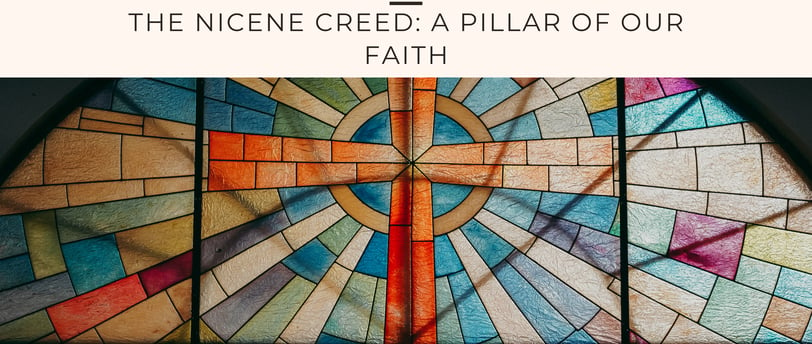The Nicene Creed: A Pillar of Our Faith
A quick overview on th origin of the Nicene Creed, also called Credo, sometimes recited at mass (often replaced by the Apostles creed)
PRAYERS
6/16/20252 min read


Every Sunday at Mass, Catholics around the world rise and profess the Nicene Creed—a powerful declaration of our shared faith. But have you ever wondered where this Creed comes from, and why it holds such a central place in our liturgy? To understand the Nicene Creed is to enter into the heart of Christian belief, shaped and preserved through the centuries by the guidance of the Holy Spirit.
Historical Origins
The Nicene Creed was born out of the early Church's need to clarify and defend the true faith against heresies, particularly Arianism. Arius, a priest from Alexandria, taught that Jesus Christ was not fully divine, but rather a created being—less than God. This dangerous doctrine spread rapidly, threatening the unity and truth of the Church.
In response, Emperor Constantine convened the First Council of Nicaea in AD 325. This was the first ecumenical council of the Church, bringing together bishops from across Christendom to affirm the divinity of Christ and to define orthodox Christian doctrine. The original Creed from Nicaea was later expanded at the First Council of Constantinople in AD 381 to include fuller statements about the Holy Spirit and the Church, resulting in what we now call the Niceno-Constantinopolitan Creed—or simply, the Nicene Creed.
Theological Significance
The Nicene Creed is more than a summary of beliefs; it is a safeguard of the truth revealed by Christ and handed down through the Apostles. It proclaims the mysteries of the Trinity, the Incarnation, the Passion, Resurrection, and the hope of eternal life. Each word was carefully chosen to reflect the fullness of the Catholic faith, guided by Scripture and Sacred Tradition .
When we recite the Creed at Mass, we join ourselves to the universal Church—past, present, and future—confessing with one voice the faith that saves.
The Nicene Creed or Credo
Here is the Creed as it is recited during the Holy Mass:
I believe in one God,
the Father almighty,
maker of heaven and earth,
of all things visible and invisible.
I believe in one Lord Jesus Christ,
the Only Begotten Son of God,
born of the Father before all ages.
God from God, Light from Light,
true God from true God,
begotten, not made, consubstantial with the Father;
through him all things were made.
For us men and for our salvation
he came down from heaven,
(At the words that follow, up to and including “and became man,” all bow.)
and by the Holy Spirit was incarnate of the Virgin Mary,
and became man.
For our sake he was crucified under Pontius Pilate,
he suffered death and was buried,
and rose again on the third day
in accordance with the Scriptures.
He ascended into heaven
and is seated at the right hand of the Father.
He will come again in glory
to judge the living and the dead
and his kingdom will have no end.
I believe in the Holy Spirit, the Lord, the giver of life,
who proceeds from the Father and the Son,
who with the Father and the Son is adored and glorified,
who has spoken through the prophets.
I believe in one, holy, catholic and apostolic Church.
I confess one Baptism for the forgiveness of sins
and I look forward to the resurrection of the dead
and the life of the world to come. Amen.
Conclusion: A Living Confession of Faith
The Nicene Creed is not a relic of the past—it is a living expression of the faith that continues to unite and sustain the Church. Every time we proclaim it, we affirm our belief in the one true God, revealed in Jesus Christ and present in His Church. May this Creed always be on our lips and in our hearts, guiding our journey of faith.
Faith
Sharing God's grace with joy and kindness.
Grace
© 2025. All rights reserved.
